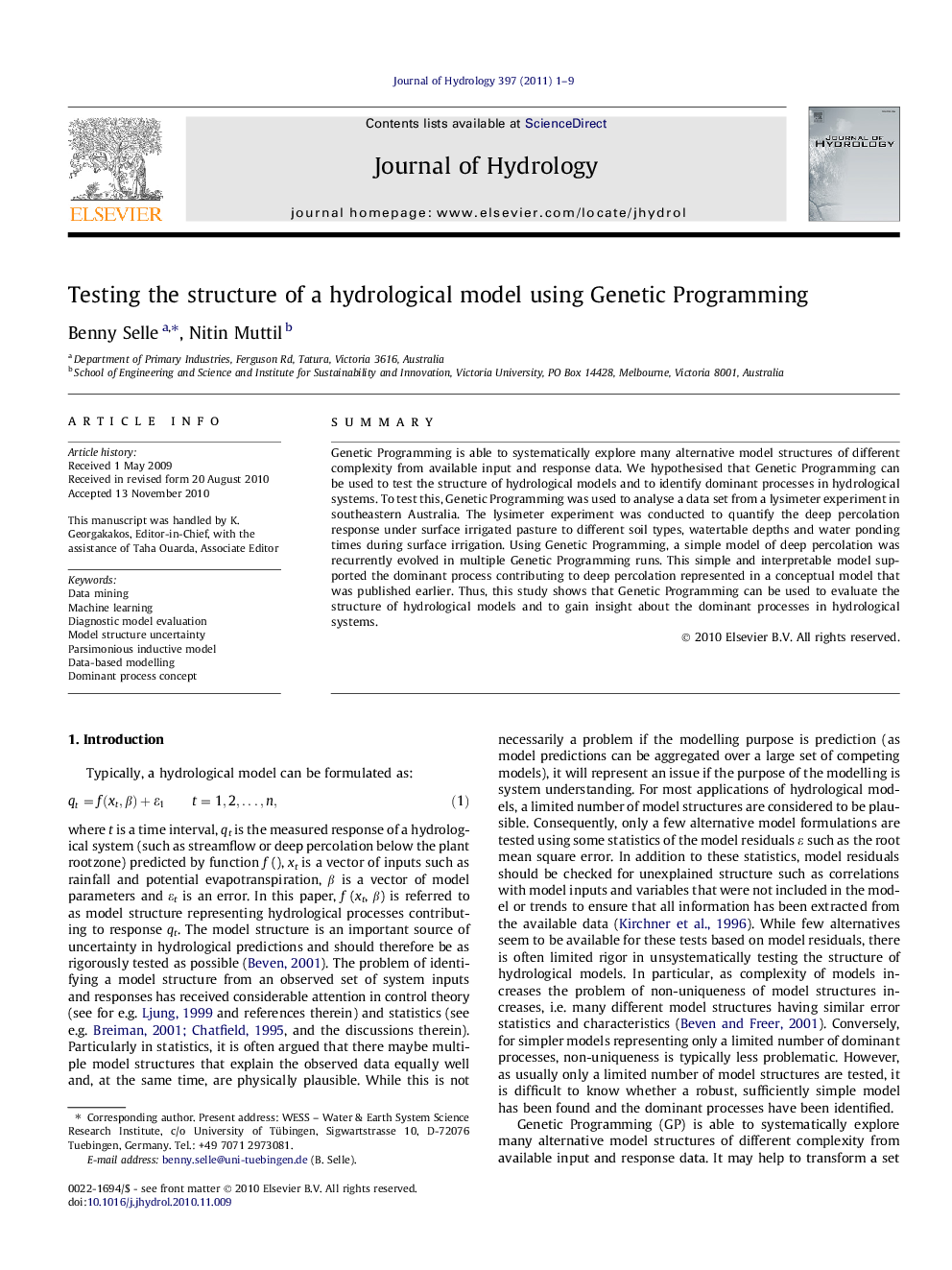| Article ID | Journal | Published Year | Pages | File Type |
|---|---|---|---|---|
| 4577850 | Journal of Hydrology | 2011 | 9 Pages |
SummaryGenetic Programming is able to systematically explore many alternative model structures of different complexity from available input and response data. We hypothesised that Genetic Programming can be used to test the structure of hydrological models and to identify dominant processes in hydrological systems. To test this, Genetic Programming was used to analyse a data set from a lysimeter experiment in southeastern Australia. The lysimeter experiment was conducted to quantify the deep percolation response under surface irrigated pasture to different soil types, watertable depths and water ponding times during surface irrigation. Using Genetic Programming, a simple model of deep percolation was recurrently evolved in multiple Genetic Programming runs. This simple and interpretable model supported the dominant process contributing to deep percolation represented in a conceptual model that was published earlier. Thus, this study shows that Genetic Programming can be used to evaluate the structure of hydrological models and to gain insight about the dominant processes in hydrological systems.
Research highlights► Lysimeter data were analysed using Genetic Programming (GP). ► A simple model was recurrently evolved in multiple GP runs. ► GP model supported structure of a hydrological model that was published earlier.
